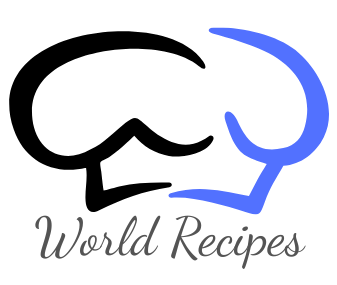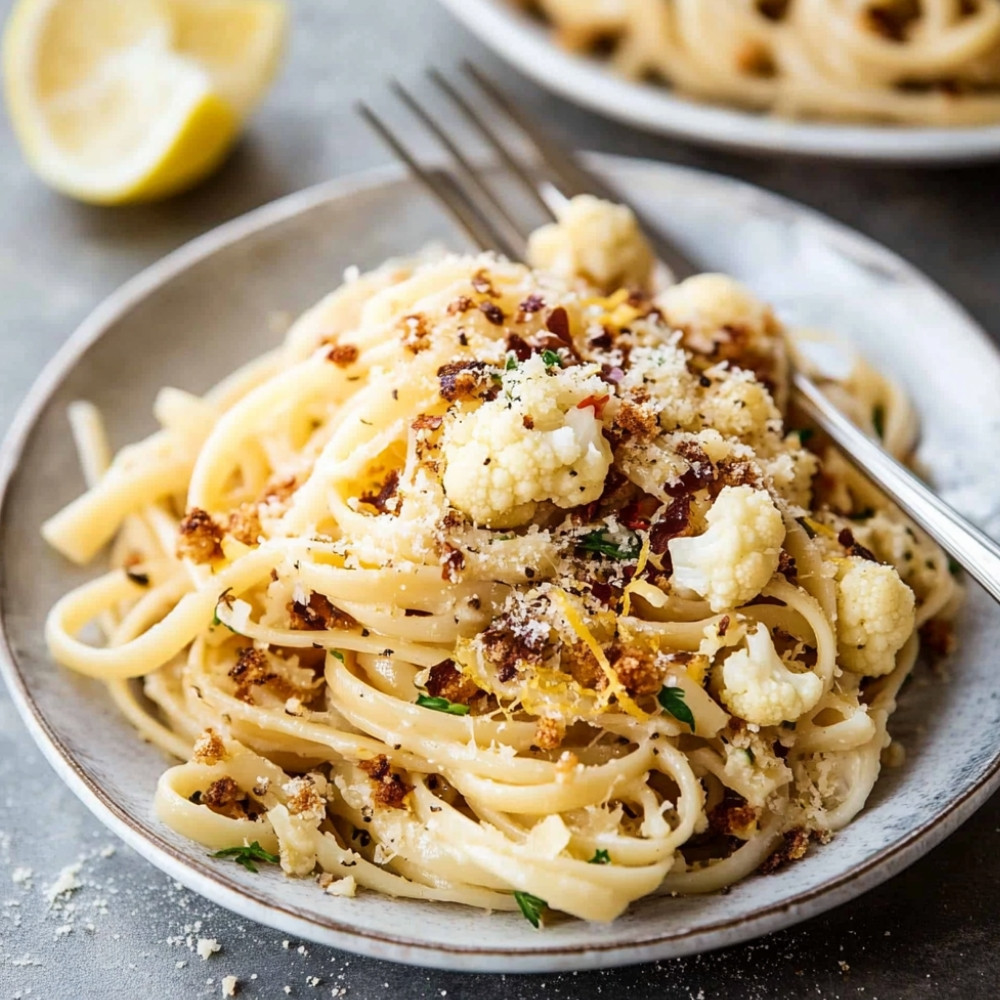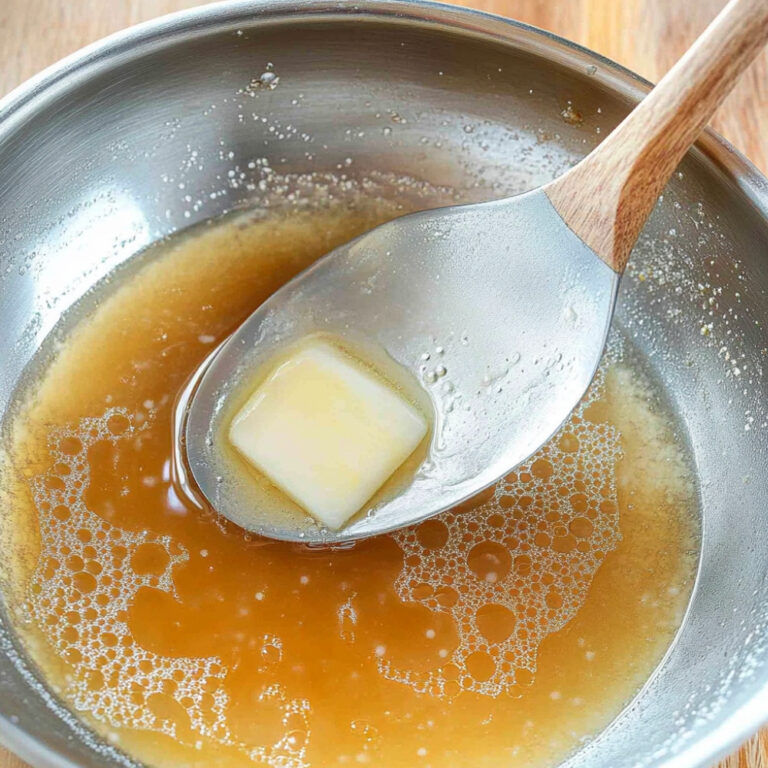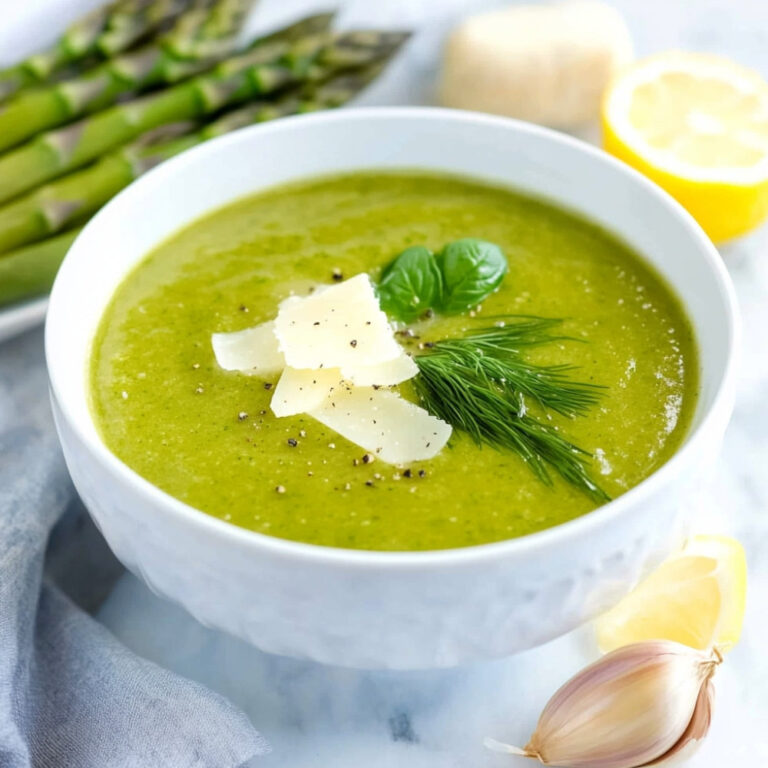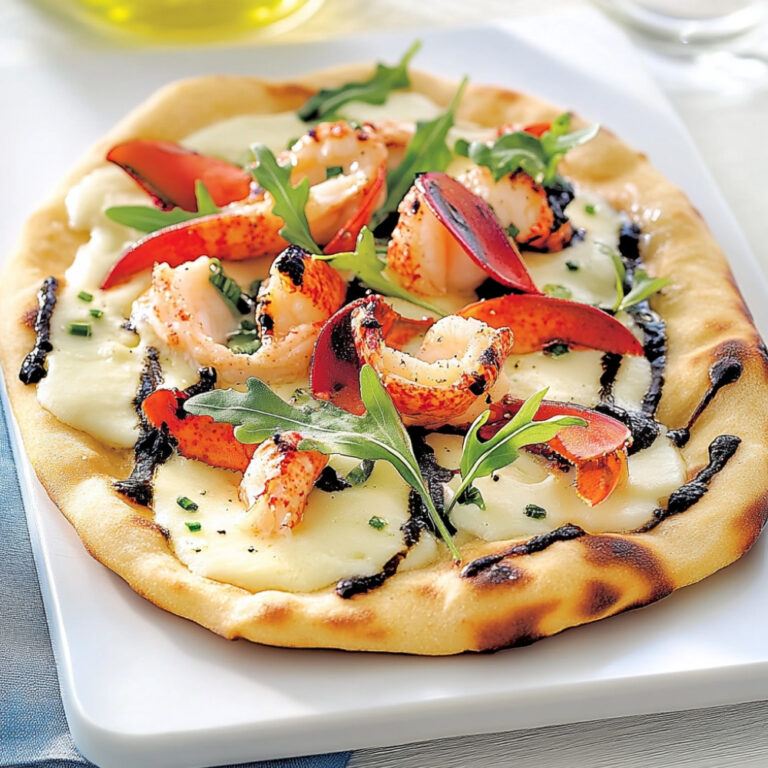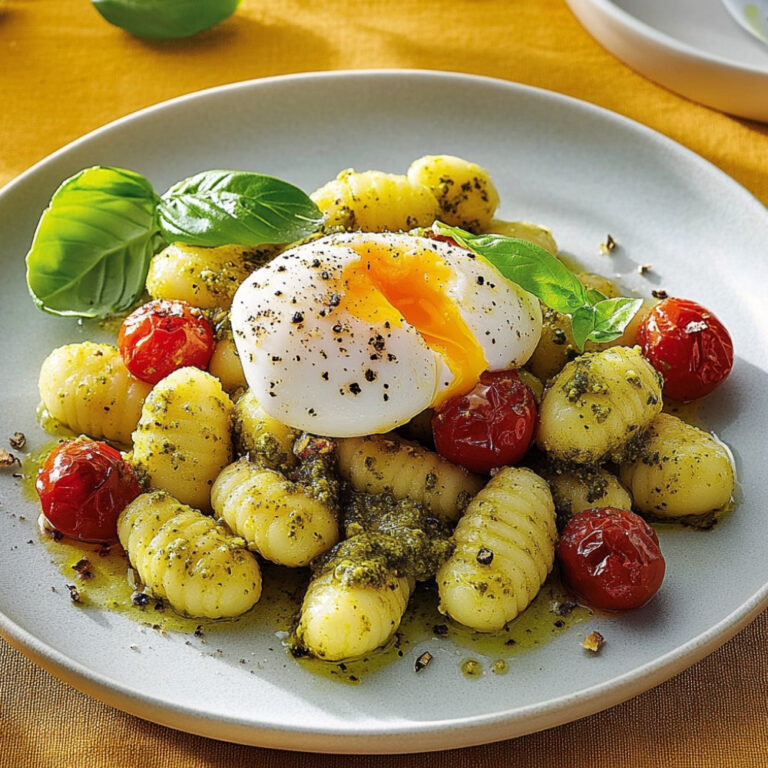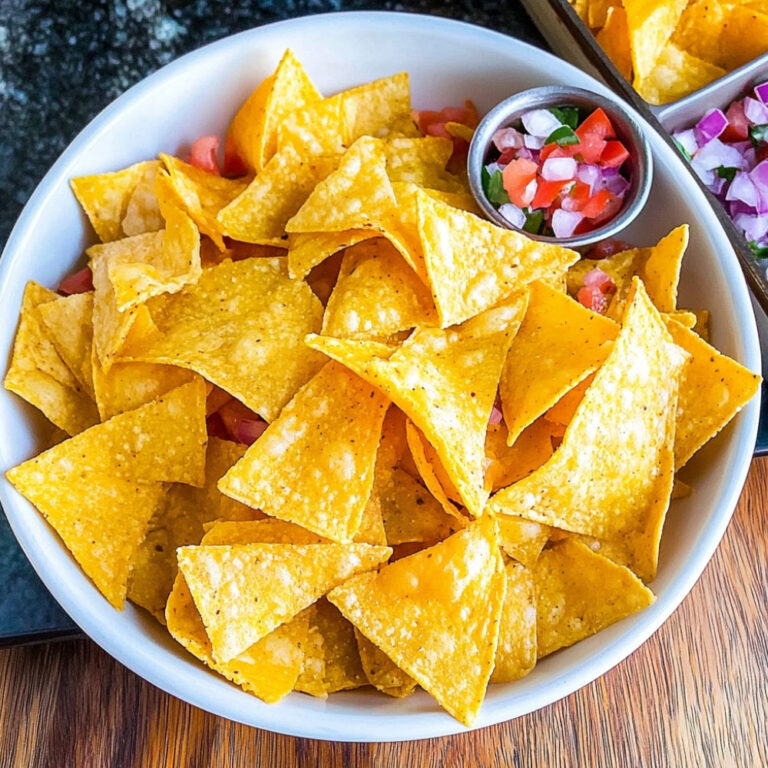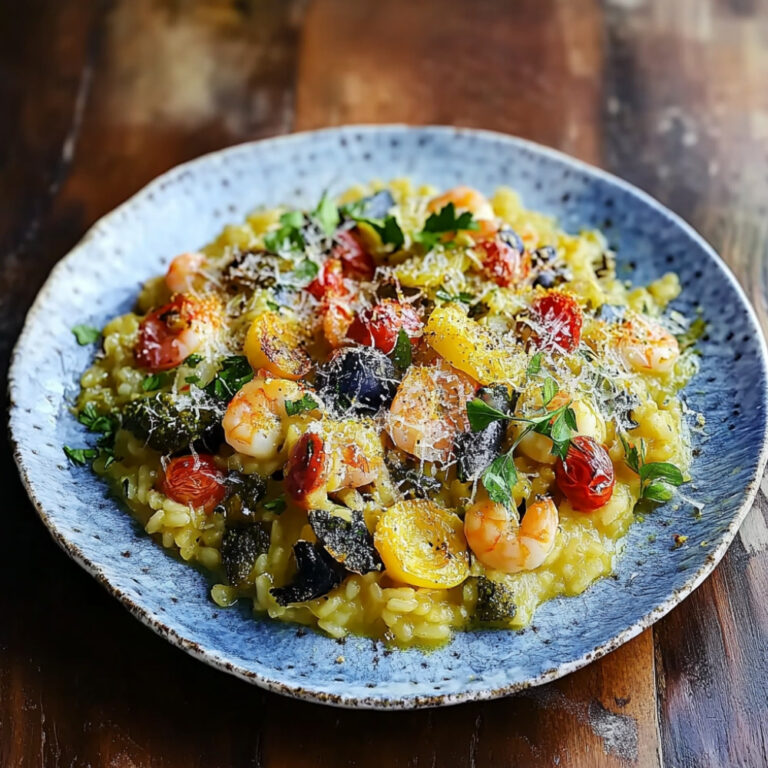Savor the Flavor: Garlic Butter Cauliflower Pasta Delight
Oh man, this Garlic Butter Cauliflower Pasta Delight… it’s like a hug on a plate. I mean, the way the buttery garlic sauce clings to the pasta and mingles with those tender cauliflower florets? Just thinking about it makes me hungry! And, oh, that pangritata on top—so crispy and full of flavor. It’s really perfect for a cozy night in or when you want to impress someone without too much fuss. Just imagine the aroma filling your kitchen… it’s kinda magic!
Why You’ll Crave It
- Quick and easy, you can whip it up in just about 30 minutes—perfect for busy weeknights!
- Earthy cauliflower and rich garlic butter work together, so the flavors are just… wow.
- That crispy pangritata… it adds a heartwarming crunch that makes each bite special.
- Customizable to your heart’s content; you can throw in whatever veggies or protein you love!
- It’s like a warm embrace for your taste buds, healthy but still indulgent. What’s not to love?
The first time I made this, my partner couldn’t stop raving about it… so, obviously, I’ve made it a million times since!
What You’ll Need
- Cauliflower: 1 medium head, cut into small florets, the star of the show!
- Pasta: 300 grams (like spaghetti or linguine, whatever you like best), so comforting!
- Garlic: 4 cloves, minced, because you can never have too much garlic, right?
- Butter: 100 grams, because this dish needs that creamy goodness.
- Olive Oil: 2 tablespoons, just a bit to help that pangritata shine.
- Pangritata: 1 cup breadcrumbs, 2 tablespoons chopped parsley, 50 grams grated Parmesan, salt & pepper to taste, and red pepper flakes if you want a little kick!
Easy How-To
Cook the Pasta
First things first,… bring a large pot of salted water to a boil. Toss in your pasta and cook it according to the package instructions until it’s al dente—like, firm enough to have a little bite. Reserve about a cup of that pasta water later, then drain the rest. Super simple!
Sauté the Cauliflower
Now, in a large skillet, melt that beautiful butter over medium heat. Add in the minced garlic and just wait… about 30 seconds or so until it’s fragrant, you’ll know! Then, throw in those cauliflower florets and sauté… whoa… we want them to get tender and golden brown, about 8 to 10 minutes. It’s gonna smell amazing.
Combine Pasta and Cauliflower
Once your cauliflower is looking pretty and ready, add in the drained pasta to your skillet. Give it a good toss to combine everything—get that garlic butter all over! It’s coming together beautifully!
Add Pasta Water
Now, here’s the magic part: Gradually pour in the reserved pasta water, just a little at a time. Stir it until your sauce becomes creamy and coats the pasta. If you feel like it’s getting too thick, just add a smidge more water. You know your pasta best!
Toast the Pangritata
In a separate pan, over medium heat, drizzle that olive oil and then add your breadcrumbs. Cook them until they’re golden and crispy, stir often—don’t burn them! After a bit, add in some garlic and lemon zest, keep stirring until it’s fragrant… yum!
Serve
Finally, divide the pasta into serving bowls, and then… oh, don’t hold back with that pangritata on top! It’s like the cherry on the cake, really! Garnish with some fresh parsley and a sprinkle of Parmesan, if you’re feeling extra generous. Dig in!
Good to Know
- If you want to change things up, any pasta shape works—short shapes like shells hold that sauce really well!
- Not a cauliflower fan? Broccoli or even zucchini are great substitutes, just adjust cooking times.
- This dish makes great leftovers; just store in an airtight container and it’ll be good for a few days, just reheat gently!
Serving Ideas
- Serve it with a light arugula salad on the side for a fresh contrast—so refreshing!
Top Tricks
- For an extra flavor punch, roast the cauliflower instead of sautéing, just toss it in some olive oil and salt before hitting the oven!
Frequently Asked Questions
Can I use a different type of pasta?
Absolutely! Just keep in mind that cooking times might vary, but anything you love will work—so go wild!
Is pangritata necessary?
While it really adds that wonderful crunchy texture, if you’re not in the mood or just want to keep it simple, you can totally skip it.
Can I make this dish vegan?
For sure! Just swap the butter for a vegan option and skip the cheese or throw in some nutritional yeast instead!
How can I store leftovers?
Store in an airtight container in the fridge for up to 3 days. Just reheat it gently—maybe add a splash of water to bring back some moisture.
What can I serve with this pasta?
This pasta pairs beautifully with grilled veggies, a bright salad, or even some roasted chicken if you’re feeling like it!
